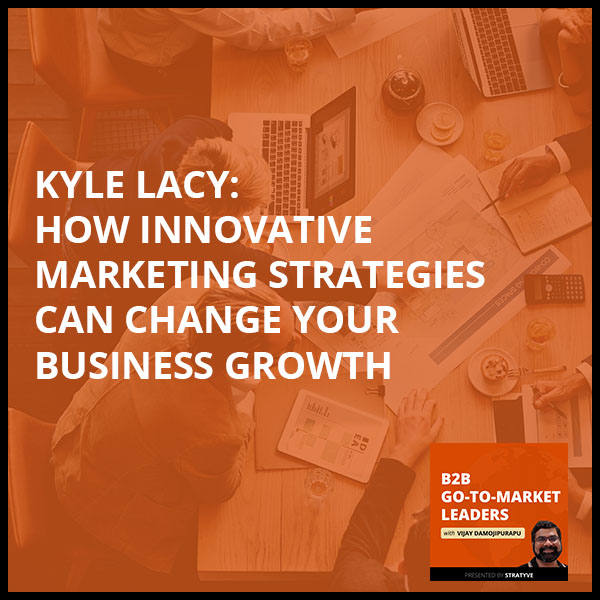
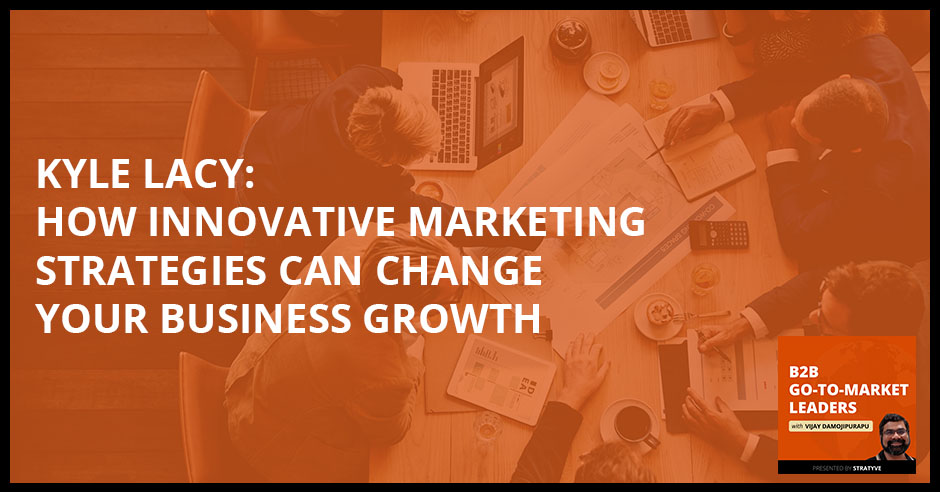
There is one undeniable and undisputed truth in business: if people have tremendous experiences using or buying your products, they will probably stick with you no matter what. And by knowing which product marketing strategies to put in place, no one can stop you from achieving favorable customer feedback and higher revenues. Kyle Lacy of Lessonly joins Vijay Damojipurapu to explain how offering excellent product experience and finding the right target market can lead to a major win for any business, eventually achieving a “forever orange” status. He also emphasizes how to properly align marketing and sales, which can improve not only business operations but the way employees and partners connect with one another.
—
Listen to the podcast here
Kyle Lacy: How Innovative Marketing Strategies Can Change Your Business Growth
I have with me Kyle Lacy who’s a CMO at Lessonly. I’m super excited. I looked up Kyle’s background and I said to myself, “I definitely have to get Kyle on the show.” The reasons are number one, you have a very storied and accomplished career, all the way from being a Founder to being part of an IPO, part of an acquisition. You also are now running marketing, not like a typical marketing organization but someone who’s responsible for revenue, which is unique in the B2B SaaS industry. I also liked the aspect that you are a three-time published author. Welcome, my friend.
I don’t think I’m going to live up to that intro. Thank you for having me. I am a three-time published author. I would not recommend picking up any of the books because they’re out of print, but if you want to go learn about Twitter marketing in 2012, it’s a great book to pick up.
I’m sure all those basics still apply. Since the show is all about go-to-market. My signature question that I start with each and every guest is how do you define go-to-market?
A lot of go-to-market is defined by the top of the funnel and net new revenue. We look at go-to-market full cycle at Lessonly. We have an inbound team, an outbound team, and a team that focuses on customer marketing and expansion. For us, go-to-market is about repeatability and an amazing experience. We focus as much on the design and the experience of the brand as we do demand. That is a very fine line and it’s hard to balance. The goal is that you are driving growth but also making it a beautiful experience.
I’m curious, one thing that you didn’t touch upon and I want to pick your brains on that is talking about the product and the user experience of the product. Can you expand on that as well?
It depends on what your model is. Now, product-led growth is on the tip of everybody’s tongue. You want the product to lead, and sales and marketing to follow. Lessonly is a sales-lead company. For us, it makes the experience great on the front end for the prospect. The product is so easy to use that the experience is great when they first stepped foot into the product, and then continue to make the experience great, and I got this from ExactTarget where I spent some time, surprising and delighting your customers. If they get a random box of goods from you that’s all personalized to them, that is surprising and delighting them that your competitors will never be able to handle.
When I say an amazing experience, it’s from the chat on Drift on our website, all the way to the implementation of the product, to the usage of the product. If we can’t retain them and expand those accounts and those customers, we’re not a viable SaaS model. It’s very important. We have to remember that all these customers are not accounts. They’re humans. We try to apply that as much as possible to how we market Lessonly from pre and post-sales.
Being in a business and building a community requires empathy, with people all riding one single boat. Share on XIt’s all about the full loop. It’s not the traditional funnel as we know, which was more about a decade ago. That’s gone. That’s extinct. Let’s switch gears a bit over here. I want to understand how you grew in the various roles. What did you take from each of the roles? You started off as a founder. You had your own company, and then you switched from being a founder to an employee from a VC perspective, as well as how you advised and how you grow in a marketing capacity. Can you share some insights and lessons from that?
I started an agency and that’s where I wrote the books because I learned that fake it until you make it is a very real thing because I was 24 years old trying to sell something. When we started the agency, we were doing design work. I was designing logos and brochures and all this stuff that you think about. We realized that we were getting beaten by everybody in the sales process. That’s when I learned the value of pivoting. For us at the business, it was, “What can we sell that people will listen to us?” That was social. It was talking about Myspace. We sold our first product to this company that was selling Myspace pages to churches.
We didn’t sell any. We sold zero of them. What that led into was consulting and teaching people how to use Twitter and LinkedIn and all that stuff. Building a company, I learned the value of pivoting and also the value of what ego plays into a sales process. There’s a fine balance with how much ego plays into your self-worth. Personally, I put way too much self-worth in my early twenties in my professional career. When we burned the business to the ground, I took a huge hit mentally from a mental health perspective. I learned very quickly you should not put your whole self into work, even though I don’t think I’ve learned that very well.
ExactTarget was a customer of mine. We had a thought leadership team. That meant we did a ton of research, a ton of content marketing when content marketing was not cool. We spoke at a bunch of conferences. Through ExactTarget, I learned the value of culture at scale. The year I joined, I’m positive we hired 500 people. What was brilliant about ExactTarget and the Orange culture, which what it was coined, was it didn’t matter how big it was. Our customers were talking about it. We were talking about it. There’s a Facebook group that’s still active that has 2,000 people in it. That’s called Forever Orange.
It’s learning culture at scale, which we’re starting to apply at Lessonly as well. At Salesforce, I learned the value of brand. You can love it or hate it but that is a marketing machine. I also learned that I don’t want to work for 50,000-plus person companies. In Lessonly, overall it’s empathy. It’s the number one thing I’ve learned. It’s how are you empathetic to yourself, your team, your customers, your prospects, and remembering that we’re all in the same boat here. We’re all human. We’re all trying to buy and sell stuff. It’s very important that you take that into account when you’re trying to build a company because it’s ultimately a community. That’s a very long answer but those were the points, the pivots.
That’s exactly what I was looking for and what my readers will value as well. Thank you for sharing. Thank you for being honest. Not many people are comfortable in disclosing and stating that, “I burnt myself to the ground when I started my own company.”
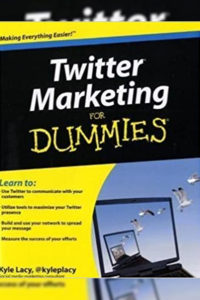
I’ve done that a few times. A lot of my self-worth is in my professional career. I don’t think that will ever change. It will never change. It’s something that fuels me. Through that process of owning a company, I realized that you have to have a team. You have to be able to support that team. You have to be able to make sure that the team believes in the mission and values of the company. If you can’t do that, it’s going to be very hard for you to scale. That’s what Lessonly has done extremely well. We have core values that have scaled from 15 people to 215 people.
At the same time, if you go back to the time when you founded your agency, back then you didn’t have revenue yet. You’re trying to figure out or you’re hoping that it’s branding, and that’s something that you can offer as a service. That’s not what the market is willing to pay you at that time. How did you find your first set of customers and revenue stream back then?
There was me. The value was I learned personal branding. I learned the value of building a community and a network of people, but it was just us. I taught myself graphic design in school. I didn’t go to school for it. I got a marketing degree. When I graduated, I started doing logo designs. This was before you could go buy something on Design Pickle for $55 that looks better than what I was doing.
Also, do something on Canva.
I’m glad that I did not start a company like an ad agency. At that time, we were selling accounting firms and manufacturing companies and all that stuff. It was a matter of what story can we tell that people resonate with. In 2009, 2010, social was a tsunami. It’s a value of understanding where the market’s at and taking a risk. We took a lot of risks but that’s part of owning and starting a company.
It’s all part of your life learning and life lessons. That’s what it is. Something that you didn’t touch upon and which I want to get your thoughts around is you also work at a VC company and initially, you’re doing marketing there. After that, you switched and transitioned to being a marketing advisor.
I forgot OpenView. That’s like the most learning I ever got in my entire career. I’m sorry, OpenView. I do respect you and I love you. You know I do. When I understood that Salesforce is not going to be for me, OpenView who’s a Series B venture capital firm out of Boston recruited me to run marketing for the firm but also consult the portfolio companies. We went through a rebrand for OpenView. I got an MBA in SaaS working for a venture capital firm that understands how to grow companies. I want to put a period on that. A venture capital firm that understands software companies is very important. You got to see the inner workings of all these software companies. You got to see what grew and what didn’t, what leadership worked and what did it. For me, I saw a market leader in ExactTarget. The year I joined, they had already won the market. We hired 500 people that year. With Salesforce, I saw what it takes to build a giant. At OpenView, it was A and B rounds. I fell in love with the A and B round stage and that’s where I’ve stayed.
There is a fine balance with how much ego plays into your self-worth. Share on XThat explains why you are at Lessonly now.
Lessonly is a portfolio company of OpenView. I highly recommend anyone that wants to get into executive-level leadership at a software company to spend some time in a venture capital firm if you can do it.
How did he get that role? Was there a lot of networking, cold calling or cold emails?
It’s all about networking. This is the importance of building a community and mentorship. When my company was failing, I had met Scott Dorsey, who was the CEO of ExactTarget at the time, at a community event. We had both gotten 40 under 40 for the Indianapolis Business Journal. I met him at an event and I randomly emailed him and said, “Scott, we met for 30 seconds. I need your feedback on a problem I’m having with my business.” He spent 45 minutes on the phone with me driving home from work one day. Every single career decision I’ve made from that point is because of Scott, just because of that phone call.
Scott was CEO of ExactTarget. We were bought by Salesforce. Scott Maxwell, who’s the founder of OpenView, was an investor in ExactTarget. When they sent a note to me that they were hiring a director of marketing, Scott Dorsey pushed me towards that. I’ll never be able to repay him because my entire career is built off of that one phone conversation we had. For OpenView, it was a good referral and Lessonly is an OpenView company and Scott Dorsey is on the board of Lessonly. It all comes full circle.
It all started with that 30-second conversation.

I’m glad I didn’t screw up in that 30 seconds.
Let’s dive a bit more into how you structured your marketing organization at Lessonly. I know we chatted a bit about this earlier. Expand that. What is your whole thought process around marketing being responsible for revenue and how are you doing that now?
We measure everything by direct source like what was the first touch in a certain timeframe. For me, I had to be able to own a huge chunk of that direct source revenue because when you do, you have a seat at the table. It is very important for creative and brand-driven marketers to have a seat at the revenue table because then you can do creative and brand-driven campaigns. We’re very lucky that when I joined, they already had a pretty strong organic strategy. For us, we set the team up in stages or even channels. We have an inbound team. We have an outbound team. We have an expansion and experienced team that has to do with customer marketing.
The goal initially was, “Let’s figure out inbound. Let’s get inbound working and growing. Let’s figure out what’s blowing up the website and redo it.” At the same time, we brought the BDRs and SDRs under marketing. We have a commercial segment and enterprise segments. We have two teams and we did that for a lot of reasons. The main reason was to force alignment between marketing and sales. The reason that you want to own a revenue number and you want to be responsible for revenue numbers in marketing is threefold. Number one, you want to have the bandwidth to be able to do creative things. We can launch a clothing line.
We can do a board game. We could do a golden llama. We can do a user conference because we support 60% of net new revenue as a marketing team. The second thing is sales and marketing alignment. If you are producing the revenue, there is no choice other than to align because if you don’t, you guys are lost. We’re all lost. The third reason is that seat at the table so that you have the ability to ask for more budget, to build out more budget, to make decisions in a way that’s meaningful and not just because you’re a brand and communications team.
Let’s double click on that marketing and sales alignment piece. Personally, I’ve seen that as a challenge in my other roles when I was looking for other employers. At the same time, that’s been something close to my heart in the last couple of years where when I was doing and leading marketing at a Series A company, it was all about marketing and sales alignment. Yes, marketing can generate all the MQLs. Let’s not even talk about MQLs right now. That’s a whole different story. Even if you generate all the leads, somewhere, somehow things would get dropped then passed back over to sales. It’s not that it’s intentional, but things happen. Talk to me about how you are creating and enhancing that marketing and sales alignment. Does it start with BDR under marketing or is it a lot more than that?
It goes to what we were talking about before. If you source 60%, 70% of revenue for a sales team, they’re going to align to you. Shared definitions, like marketing qualified lead. There are a few other forums out there, but we have one form on our website and that’s request a demo. We don’t feed content leads to the sales team. Marketers do not feed content leads to the sales team because you’re going to screw alignment up. I hope that nobody’s doing that now. I hope that we’re far beyond that, but I know that we’re not.
A team must believe in a collective mission and values. If you can't do that, it will be very hard to scale. Share on XAre you talking about data content?
Yeah. Just because somebody downloaded an eBook, it doesn’t mean you need to put a headcount on following up with them. Open it up. Dave Gerhardt said this years ago. I don’t need to rehash this. It’s a shared definition and it’s also meeting weekly. We have a funnel and pipeline meeting that we meet every week and it’s all the revenue leaders. It’s CX, sales, marketing, and it’s run by revenue ops. We go through the pipe, the goals, the metrics, and that aligns everybody. Even if it can be tedious, you’re at least seeing everybody weekly. For me, that’s the main thing. It’s being open and asking clarifying questions. It’s making sure that you are communicating appropriately and effectively. You have to be joined at the hip with the sales leader. There’s no other choice. If we were doing great events and direct mail, you’re just an afterthought.
Neither would you have a seat at the table because that’s not directly sourcing revenue.
They’d put me under a CRO or something. We don’t want that.
Let’s talk about product marketing. You didn’t mention about product marketing, even though it has the function and the second word in that is marketing. Somehow it doesn’t appear under marketing. Why?
We’re pretty unique in the fact that we have a very large revenue enablement team. The way that our revenue enablement team is built out is that it has sales engineers, solutions consultants, sales enablement, and we added product marketing. The reason why is because it is the center point of all the revenue teams. It lives in between everyone. If you want alignment, it pretty much comes out of the revenue enablement team or revenue productivity or whatever you want to call it. When we were looking at product marketers, you might have questions about failures. Maybe I’ll save this for the failure section. It made more sense to house the product marketer there. Product marketing, because of messaging, positioning, competitive analysis, lives within revenue enablement

Typically, product marketing does all those things, which includes positioning, messaging, competitive sales enablement, but there’s also the piece around the launch. There’s also the piece around go-to-market strategy and execution. Who does that?
That is shared between marketing sales and revenue enablement.
It makes sense because Lessonly is primarily a sales-driven organization.
We don’t have a free trial. We’re sales-led. For me, it’s how do you continue to build the product into campaigns and messaging and make it fun. We’re working towards that. We have a great product marketer that joined us. I’m excited for us to continue evolving that.
You mentioned that in Lessonly, you moved all the way from SMBs or mid-market to enterprise. That transition is hard. A lot of companies cannot make that transition effectively, or they’re stuck and they focus on one vertical. How did you make that transition and what are the lessons learned there?
Just a clarifying point, we added enterprise, we didn’t transition. We still have a commercial segment, SMB segment, bread and butter, repeatable. It works well. I have a lot of learnings for moving up market, which we could spend an hour talking about. For us, number one, we put sales headcount towards it. If memory serves me correctly, we had two commercial/mid-market reps that we thought would work well in the enterprise. We moved them into enterprise and we created an enterprise sales unit. We had enterprise SDRs. If anybody’s thinking about doing this, you need to take notes here. You need more than two sales reps to try to figure out if something’s going to work or not.
For what we did, it worked for the most part but if we would have taken the bet and risked it and hired two others and had four enterprise AEs, we would have learned more. We would have had more data. We would have been able to make better decisions. The second thing is product marketing. We didn’t have a product marketer. If I would have pulled the trigger and hired a product marketer years ago, it would have been an easier transition for us because it has all to do with messaging and business outcomes and all this stuff. It was not built into our DNA as a company to talk about that stuff. The biggest thing is you have to make the commitment and it is not cheap, both from a headcount perspective as well as a budget perspective.
You cannot apply a commercial go-to-market model to an enterprise go-to-market. Share on X
From a timeline perspective, it took you probably 18 to 24 months before you started seeing the learnings, and then applying those learnings.
We started seeing revenue twelve months in, but not from post-sales. It is amazing. The implementation team, the services team, the account managers. Go-to-market, we’re about 80% of the way there, so 24 months. It depends on sales cycles as well.
It all boils down to the difference in the go-to-market motion. When you talk about go-to-market for mid-market versus go-to-market for enterprise, it’s different but it does. Number one, the deal size is different. It’s bigger. Second, it’s a complex sale cycle. It’s a lot of touchpoints, be it buyers or influencers on a committee. You also need to have a lot of educational material, which almost borderlines branding and awareness. It’s all of those pieces.
You cannot apply a commercial go-to-market model to an enterprise go-to-market. It’s the difference between we know we know how many demos we need to get in commercial to confer X amount of ARR. We’re in a named account model and enterprise. It’s very different. You have to have prioritization and understand what you want to accomplish. Go-to-market is easy compared to the product when it comes to enterprise. The amount of time and energy you have to spend trying to figure out like accelerations and the roadmap and all that stuff when you have huge deals come in, it’s a walk in the park for go-to-market compared to what product has to deal with.
I’ll challenge you a bit on that, Kyle. The reason being when I say go-to-market, it includes product. Somehow, there’s a notion that go-to-market is mostly marketing and sales and then customer success, but then it starts with the product. The product plays a key role because if you expand go-to-market, you need to, first of all, understand the market. The features and the road map will then line up to the product. That’s my little mission behind this whole show. I want to expand that whole thought process in the industry. I don’t know how successful I will be, but there’s this notion of any talk about go-to market is mainly marketing and sales.
It depends on the product. If we’re talking about Expensify, Mailchimp, Calendly and Postscript, that’s product growth. The product is first. We could talk about that all day long because that’s the future of software if it’s not already here. I’m 100% in agreement and marketers need to understand that.

What are your big goals for 2021?
For us, it is fully understanding what it means to support a sales team and customer service team when it comes to sales readiness and coaching. That’s what we sell. We focus on everyone from a software sales team all the way up to a huge call center. Number one, it’s understanding the market. Number two, it’s getting back to the routine. After 2020, we have over 200 employees and the majority of them are in Indianapolis, and we were all in an office together. Despite the fact that it’s been some time now since we went remote, there’s a lot that’s changed. There’s a lot that happens when you’re all remote, even from a hiring process. The majority of our jobs now, the people are probably not going to be in Indianapolis.
For us, it is continuing to evolve the product and positioning because that’s what you do if you want to stay ahead. Understanding the remote culture and making sure that we are being community-oriented to everyone, not just the people in Indianapolis, especially when we go back to the office. Number three, it’s evolving and being more creative as a marketing team. We will constantly try to do that. That’s what makes this whole thing fun. If you want to do a board game, do a board game. If you want to do a user conference, do a user conference. I love Dooley’s webinar where they make people eat hot sauce and answer questions. Stuff like that. We got to have more fun in B2B marketing. The B2C marketers are looking at us like, “Come on, this is boring.” You’ve got to be more consumer-oriented, in my opinion.
Think of it this way. B2B, you’re selling, you’re doing business to business, but at the end of the day, it’s humans who are the buyers.
Here’s another one. Don’t send me a blanket, a t-shirt or a Yeti bottle. That’s it. That’s my 2021 thing. Don’t send me crappy swag. If you’re going to send me something, let’s do this right. 2021, the year of cool swag. No crappy swag. For those of you who are reading, that is a joke, but please don’t.
When it comes to talking about those, you mentioned about expanding or strengthening your messaging piece, strengthening your sales and support. If you were to have an extra budget, who would you hire or where would you invest in and why?
It’d probably be on the customer side, the customer marketing. We have a great customer community called Lamination. That’s a mobile app. It’s awesome. It’s highly engaging and more support there. Customer marketing partnerships and expansion, that’s where I would focus if I had more budget.
In order to make B2B marketing more fun and productive, it must become more consumer-oriented. Share on XLet’s move on to the closing segment over here. I got a bunch of questions here. If you were to look at the industry across over to your peers, who would you call out or who would you do a shout out to as someone who’s executing the go-to-market very well? I know you mentioned Dave Gerhardt. We talked about Chris Walker in the B2B space. Besides those and in addition to those, who would you call out and who would you give a shout out to?
For sure, and not because he’s a great marketer because he’s a brilliant human being, is Anthony Kennada. He’s the CMO at Front. He was the CMO at Gainsight. He grew Gainsight from $0 to $100 million in IPO. He truly understands this idea that there’s a human element in all that we do as marketers. He does it in a way where it seems easy. I have a lot of respect for him. A lot of respect for Ryan Bonnici, who’s now at Whereby, who was at G2. I worked with him at ExactTarget. I could rattle off tons of people. I have two more. Jeff Reekers who’s the CMO at Aircall. He’s an amazing person. Andrea Kayal who’s the CMO at Electric.
I’ve heard of Anthony. I have not heard of others but after this, I’m going to make a note for myself and look them up and study them. That’s something that I’m doing here on the show. I want to host the good talk leaders. It’s a butchered term, by the way. People who think from a human perspective, be it whatever function.
Jeff and Andrea would be great. They’re great human beings.
I’m going to reach out to them. If I have trouble, hopefully, you can do an introduction.
If you want me to introduce you, you’re going to have to remind me, though.

Thank you. My last question. If you were to go back in time to your first day when you’re doing go-to-market, it’s probably when you are doing the agency. What advice would you give to your younger self?
This is what I would say and I know I wouldn’t accept it as a 24-year-old. It would probably be, “Don’t take things so seriously. If you lose a deal, don’t let it ruin your weekend,” but I know myself well enough that it wouldn’t change anything. I would probably say don’t take things too seriously. For me, I love what I do so much that it is part of me. I will always work in marketing. I’ll always work in software. I will build businesses until the day I die. Don’t take things too seriously but also have fun is a better way to frame it. Earlier in my career, I was so focused on succeeding that I didn’t have fun. There are positives to that. I worked extremely hard but I feel like I aged twenty years when I was 25.
Lucky you and clearly, you’ve come out with a lot of humility from that whole experience. I can see that in you as a person. I also see that other aspect, which is a lot of times, especially in our society, we associate success with monetary gains, awards or rewards, but if you dig deep, a lot of success comes from failures.
It also comes from building great teams. I love seeing people that I managed at ExactTarget in leadership roles. Tim Kopp, who is the CMO at ExactTarget at the time. Now, he’s CEO at Terminus. He has over ten people that were on his team that are all CMOs. That’s what I want to do. The whole reason you want to be a leader is to build people up and see them succeed in the future. That’s why I do it, other than the fact that I love marketing.
I know we’re coming up on time. I can go hours and hours on this and I can see that in you as well. We should do a redo and come back at a later point in time. Thank you so much. It’s been a pleasure and I’m wishing you and Lessonly the very best.
Thank you so much. I appreciate it.
Important Links
- Lessonly
- Dave Gerhardt – LinkedIn
- Chris Walker – LinkedIn
- Anthony Kennada – LinkedIn
- Ryan Bonnici – LinkedIn
- Jeff Reekers – LinkedIn
- Andrea Kayal – LinkedIn
- Tim Kopp – LinkedIn
About Kyle Lacy
 Serves as a Chief Marketing Officer at Lessonly, a training and enablement software company based in Indianapolis, IN. The team consists of amazing designers, growth marketers, customer marketers, field marketers and inbound/outbound sales reps.
Serves as a Chief Marketing Officer at Lessonly, a training and enablement software company based in Indianapolis, IN. The team consists of amazing designers, growth marketers, customer marketers, field marketers and inbound/outbound sales reps.
I apply the lessons learned while working at a venture capital firm, an IPO, an acquisition by one of the largest software companies in the world to drive revenue at Lessonly.
Love the show? Subscribe, rate, review, and share! http://stratyve.com/

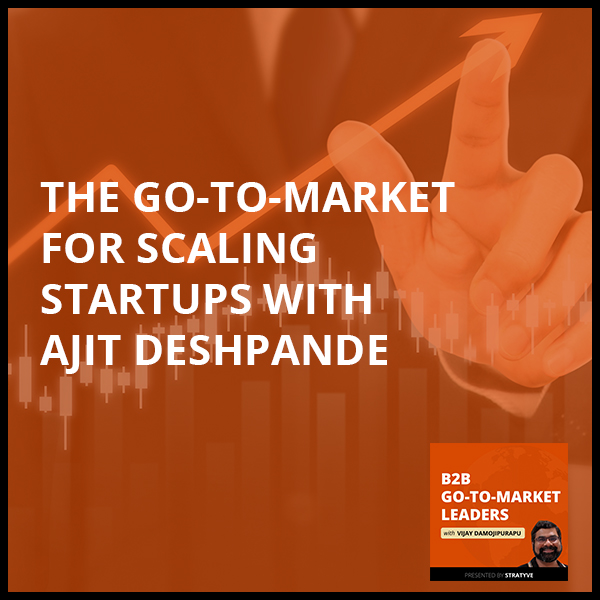
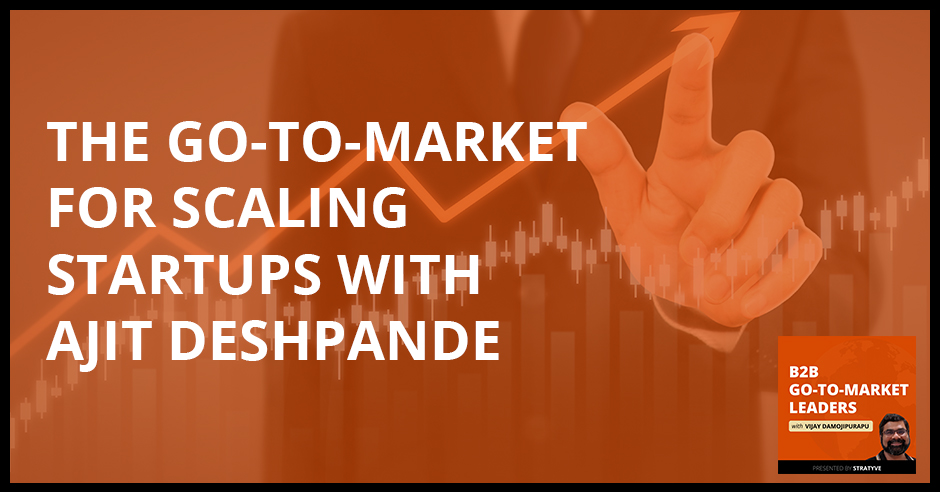



 Vice President of Demand Generation at Marqeta, Inc
Vice President of Demand Generation at Marqeta, Inc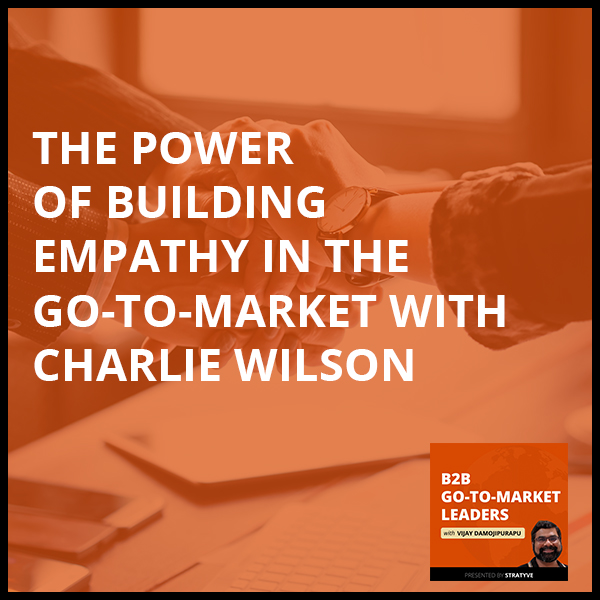
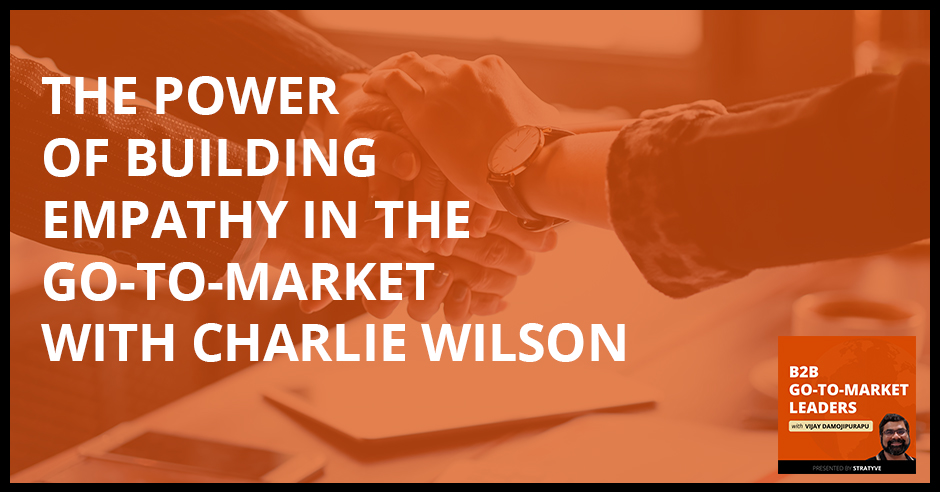



 Proven leader with a mind for the big picture and an eye for the details. Twenty years of executive experience with pioneering technology, payments, and commerce companies. A natural networker, a quick study, and strong advocate of payment solutions for cannabis retail. Earned two engineering degrees: B.S., Arizona State University; M.s., Stanford University.
Proven leader with a mind for the big picture and an eye for the details. Twenty years of executive experience with pioneering technology, payments, and commerce companies. A natural networker, a quick study, and strong advocate of payment solutions for cannabis retail. Earned two engineering degrees: B.S., Arizona State University; M.s., Stanford University.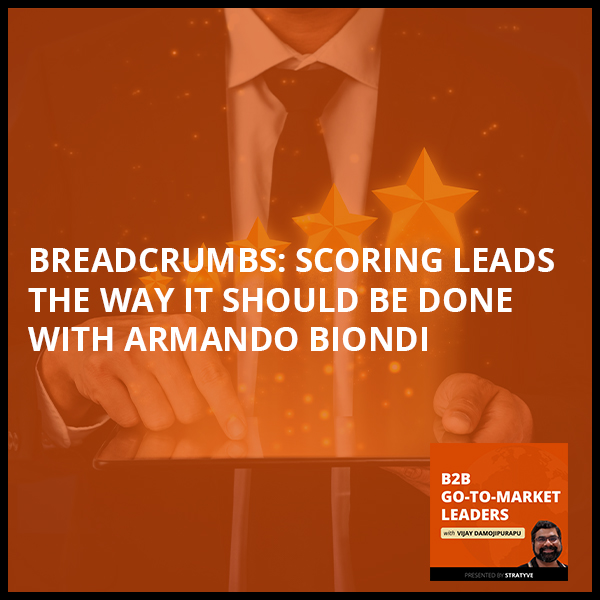
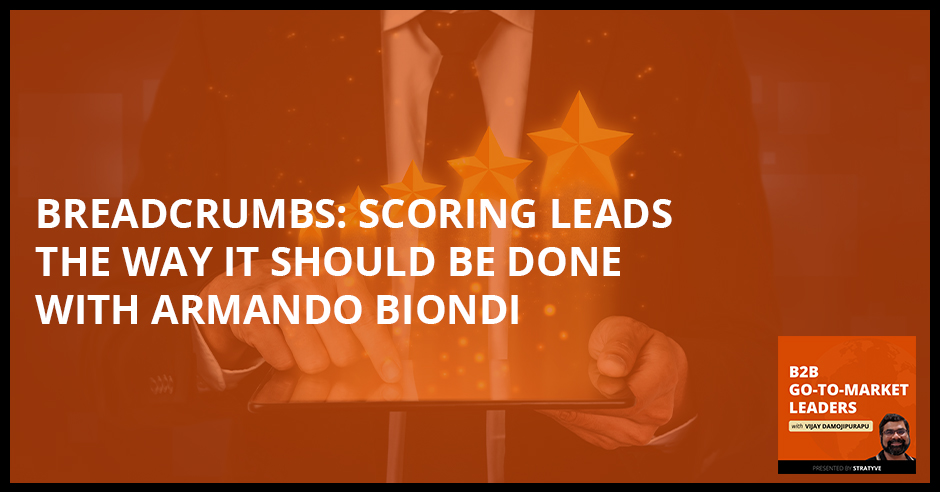



 As part of Hootsuite’s Senior Leadership, he oversees all things Ads from a GTM/strategy perspective. He also oversees all things Inbound on a series of properties generating more than 2M unique visits monthly, as well as other high-potential special projects.
As part of Hootsuite’s Senior Leadership, he oversees all things Ads from a GTM/strategy perspective. He also oversees all things Inbound on a series of properties generating more than 2M unique visits monthly, as well as other high-potential special projects.